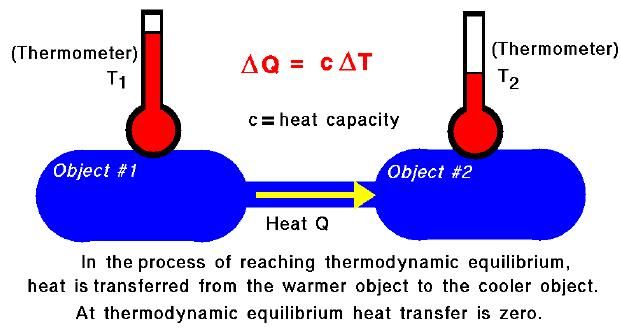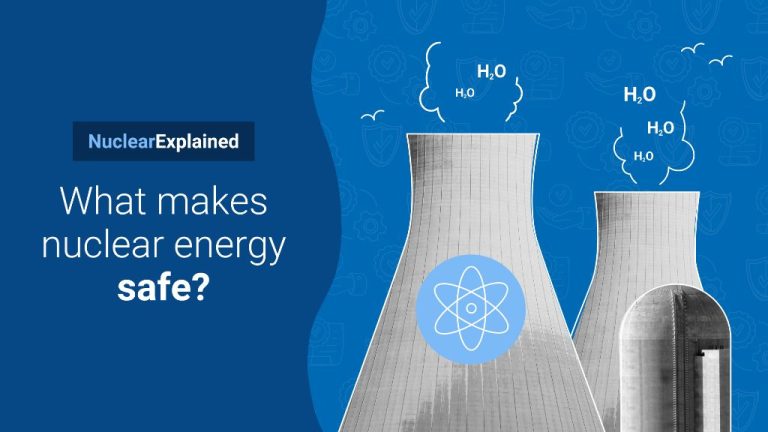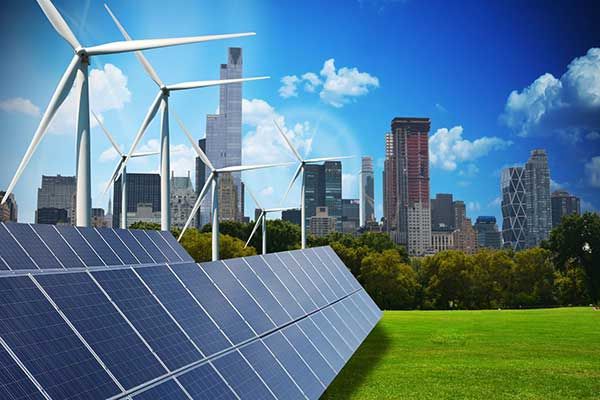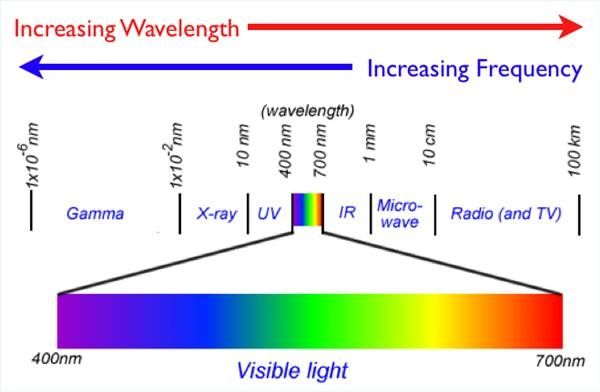What Is The Holy Grail Of Clean Energy?
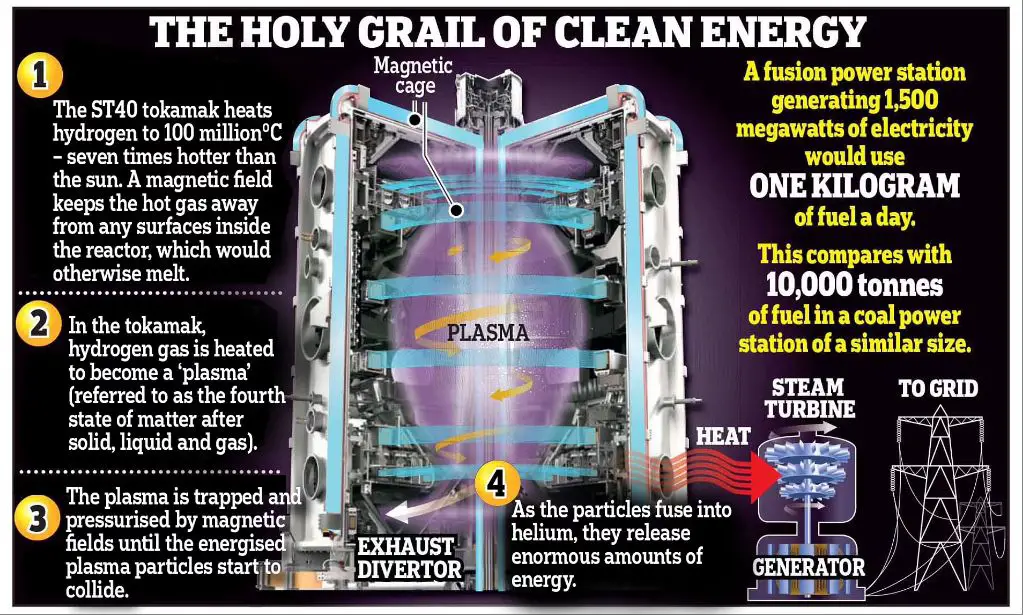
The “holy grail” is considered the ultimate goal or ideal in a given field. In the context of energy, the holy grail refers to the perfect or ideal form of clean energy production that is sustainable, abundant, and affordable.
Clean energy is renewable energy from sources like solar, wind, hydro, geothermal and nuclear fusion that produce little to no greenhouse gas emissions or air pollution. Finding the holy grail of clean energy is critically important to fight climate change and reduce reliance on fossil fuels which damage the environment.
This article will examine the leading options for the potential holy grail of clean energy production and the benefits and limitations of each technology.
Solar
Solar power generates electricity from the sun through panels or concentrated solar plants. It is regarded as a possible holy grail for clean energy because it is completely renewable. The sun generates far more energy than the world needs, billions of years of supply. Solar relies on a free and limitless fuel source. The Department of Energy reports that the amount of solar energy that hits the Earth every hour is more than the entire world uses in a year (https://www.perchenergy.com/blog/innovation/nuclear-fusion-breakthrough). Once the initial infrastructure
is in place, the operating costs are extremely low. New advances in solar panel technology have also dramatically reduced costs in recent years.
However, solar power does have some downsides that prevent it from being the definitive holy grail. Solar only generates energy when the sun is shining, so battery storage or supplemental power sources are needed for overnight and cloudy days. It currently only provides a small fraction of global energy needs, though growth is rapid. Large amounts of land are required for utility-scale solar farms. The manufacturing of solar panels has some environmental impacts with toxic materials. Overall solar power has excellent potential as a growing and sustainable energy source, but may fall just short of being the single holy grail due to intermittency challenges.
Wind
Wind power harnesses the kinetic energy of wind to generate electricity. Wind turbines convert the motion of wind into rotational motion to power electric generators (1). Wind power has emerged as one of the most rapidly growing renewable energy sources in recent years. Some key advantages of wind power include:
Wind power produces no air pollution or carbon emissions during operation, making it a clean form of energy generation. According to the U.S. Department of Energy, wind power in the U.S. avoided over 198 million metric tons of CO2 emissions in 2020 alone (2).
Wind power relies on an unlimited, free fuel source—the wind. This makes generation costs stable and predictable compared to fossil fuels. The costs of wind power have declined dramatically in recent decades as technology has improved.
Wind turbines can be installed on land or offshore in large wind farms that take advantage of economies of scale. The modular nature of wind turbines allows capacity to be added incrementally as needed.
Despite these benefits, wind power also faces some challenges as a large-scale energy solution:
Wind power is intermittent and variable based on wind patterns, requiring backup power or grid integration solutions when wind speeds are low. Locations with the strongest, most consistent winds are often remote from major population centers.
While wind turbine costs have fallen, they have high upfront capital costs and large land or ocean areas are required for utility-scale wind farms. Transmission lines are needed to connect remotely located wind farms to the electric grid.
Overall, wind energy shows significant promise as a scalable, low-carbon energy source but relies on smart grid management and energy storage innovations to overcome intermittency challenges (3). It is a versatile renewable technology but requires coordination with other sources for reliable, around-the-clock clean power generation.
(1)
(2)
(3)
Nuclear
Nuclear power has long been touted as a potential “holy grail” of clean energy due to its ability to generate large amounts of carbon-free electricity. Nuclear power plants work by harnessing the energy released when uranium atoms split apart in a process called nuclear fission. This process heats water to produce steam that spins a turbine to generate electricity.
According to the U.S. Energy Information Administration, nuclear energy provides about 20% of U.S. electricity and is the largest source of low-carbon energy in the country. Supporters argue that nuclear power is a reliable, safe, and emissions-free energy source that can provide baseload power to supplement intermittent renewable sources like wind and solar. Nuclear plants can operate over 90% of the time, compared to around 40% for solar and wind plants.
However, nuclear power also faces significant challenges. Plants are very expensive to build, costing billions of dollars. There are concerns about safety and radioactive waste disposal. And nuclear proliferation risks have always overshadowed civilian nuclear power programs. Major accidents like Chernobyl and Fukushima have further eroded public support in some countries.
Still, advanced nuclear designs aim to address these drawbacks. Next-generation reactors could be safer, cheaper, and produce less waste. Fusion reactors theoretically provide limitless clean energy by replicating the fusion process inside the sun. After decades of research, fusion startups are now racing to demonstrate net energy gain from fusion reactions within the next few years. If commercialized, fusion could be the ultimate holy grail of clean energy. But significant technical hurdles remain.
So while nuclear fission and potential nuclear fusion face challenges, their ability to provide abundant zero-carbon energy means they will likely play a role in a carbon-free energy mix. But it remains to be seen whether nuclear can overcome economic and societal obstacles to become the primary holy grail energy source.
Sources:
https://www.perchenergy.com/blog/innovation/nuclear-fusion-breakthrough
Hydro
Hydroelectric power comes from capturing the energy in flowing water and converting it into electricity. Water, typically held behind dams, flows through turbines that spin generators to produce power. Hydroelectricity has been used for over 100 years and is an established renewable energy source.
As an overview, hydroelectric power has several advantages. It is a clean, renewable source of energy that does not produce air pollution or greenhouse gases. The fuel source, flowing water, is continuously replenished through the water cycle. Once dams and equipment are built, operating costs are low compared to other energy sources. Dams provide reservoirs that can be used for recreation, flood control, and irrigation. However, there are also disadvantages. Large hydro projects can damage local ecosystems, displace communities, and alter natural water flows. While hydro does not directly produce emissions, dams can create methane emissions from decaying vegetation. There are also limits to the number of suitable hydro sites globally (PBS).
When considering hydroelectricity as the potential holy grail of clean energy, it faces limitations. While a reliable renewable electricity source, suitable dam sites are geographically limited by the need for large flowing rivers. This restricts the global scalability of hydro. There are also environmental impacts from flooding large areas and restricting natural water flows. While a key clean energy source, hydroelectricity alone cannot provide unlimited carbon-free power worldwide (Perch Energy). Hydro will likely remain part of the clean energy mix, but cannot singularly achieve the holy grail status of providing unlimited clean electricity globally.
Geothermal
Geothermal energy is harvested from the Earth’s internal heat. It comes from and beneath the surface of the planet which ranges in various depths to harness this heat energy. Modern geothermal resources are utilized in two main applications: geothermal heat pump systems and geothermal power plants. This type of energy is considered renewable when proper reservoir management is employed for the bore holes to be remain productive.
Geothermal energy is potentially the holy grail of clean energy for several key reasons. First, it is able to provide constant baseload power, unlike intermittent sources like solar and wind. This gives it a key advantage as a clean energy source that can displace fossil fuels. Second, geothermal energy is available globally and is not geographically limited like hydroelectric power. Estimates show there is enough heat beneath the Earth’s surface to provide substantial worldwide energy production. Finally, geothermal power produces near-zero emissions and has a tiny environmental footprint compared to conventional energy sources.
However, there are some downsides that prevent geothermal from being a panacea. Harnessing geothermal energy can be geographically limited to areas with optimal subsurface heat and permeability. Additionally, upfront costs for geothermal plants are high and development can carry risks of limited productivity or drilling in non-ideal areas. Ongoing management of reservoirs is crucial as well. Overall though, geothermal remains one of the most promising renewable baseload energy sources available today. With continued innovation and investment, it has the potential to play a major role in a clean energy future as a stable grid provider analogous to fossil fuels.
Sources:
https://www.rechargenews.com/energy-transition/us-air-force-pilots-holy-grail-tech-targeting-limitless-energy-from-earths-core/2-1-1528774
https://bnn.network/breaking-news/energy/unlocking-the-holy-grail-of-clean-energy-the-pursuit-of-geothermal-power/
Biofuels
Biofuels are fuels made from renewable biological sources like plants, agricultural residues, or even algae. They have emerged as a promising clean energy source because they can provide energy while reducing reliance on fossil fuels. Some of the most common types of biofuels are ethanol, biodiesel, and biogas.
Biofuels have appealing benefits – they are renewable, can be domestically produced, and have the potential to reduce greenhouse gas emissions compared to fossil fuels. However, there are also downsides. Growing crops for biofuels requires land and resources that could displace food production and impact biodiversity. Some studies also show that certain biofuels may not reduce emissions as much as hoped when factoring in land use changes [1].
The “holy grail” of biofuels is developing processes that maximize efficiency and minimize environmental impacts. Advanced biofuels from non-food sources like agricultural wastes, algae, and genetically engineered crops are particularly promising. These could provide energy and lower emissions without competing for cropland. But they require major technological breakthroughs to become commercially viable at scale [2]. While biofuels are not yet the perfect clean energy solution, ongoing research aims to improve sustainability and unlock their full potential.
[1] https://news.mongabay.com/2023/03/a-liquid-biofuels-primer-carbon-cutting-hopes-vs-real-world-impacts/
[2] https://wvutoday.wvu.edu/stories/2023/05/18/wvu-researcher-searching-for-holy-grail-of-sustainable-bioenergy
Hydrogen
Hydrogen is a clean-burning fuel that releases only water vapor and heat when used. It has emerged as a promising option for clean energy. When produced from renewable sources, hydrogen can provide carbon-free energy for transportation, electricity generation, and more. Some view hydrogen as a potential “holy grail” of clean energy due to its versatility and environmental benefits.
Hydrogen can be produced through processes like electrolysis using renewable electricity to split water molecules. It can then be stored and transported for later use. Fuel cells can convert hydrogen into electricity without combustion or emissions. Hydrogen can also be blended with natural gas or used directly for heating and power generation.
However, hydrogen does face challenges. Producing it sustainably requires abundant cheap renewable energy. Storing and transporting hydrogen can be complex and costly due to its low density. Fuel cells remain expensive. Overall infrastructure is lacking for widescale hydrogen adoption. Significant investment and development is still needed for hydrogen to reach its full potential.
While not without difficulties, hydrogen represents one of the most promising zero-emission energy carriers. With continued research and investment, hydrogen may emerge as a “holy grail” of clean energy that can decarbonize hard-to-abate sectors. But realizing its full potential will require overcoming remaining economic and technological hurdles. [1]
Fusion
Fusion power has long been heralded as the potential holy grail of clean energy. The basics of fusion power involve fusing together light atomic nuclei, such as hydrogen, to generate massive amounts of energy without any greenhouse gases or radioactive waste. Fusion reactions power the sun and stars, demonstrating that fusion energy is possible, but the challenge has been harnessing it for practical use on Earth.
Major research projects around the world for decades have been making steady progress toward viable fusion energy. The leading approaches are magnetic confinement fusion and inertial confinement fusion. Magnetic confinement fusion uses powerful magnetic fields to contain the fusion plasma, while inertial confinement fusion uses lasers or particle beams tocompress and heat fusion fuel.
No fusion power plant has yet been able to produce more energy than it takes to initiate the reaction. But with larger experimental reactors like ITER in France expected to achieve a net energy gain in the 2030s, there is optimism that fusion may one day be the holy grail of limitless, clean energy to power the world.
Conclusion
The main contenders for the holy grail of clean energy discussed were solar, wind, nuclear, hydro, geothermal, biofuels, hydrogen, and fusion. Each has its advantages and disadvantages in terms of cost, scalability, reliability, and environmental impact.
Of these options, nuclear fusion currently seems closest to being the holy grail. Unlike nuclear fission, fusion emits no greenhouse gases, produces only helium as waste, and is inherently safe with no risk of meltdown. Recent breakthroughs at facilities like ITER demonstrate that fusion may be technically feasible within decades. If cracked at scale, fusion could provide unlimited clean energy with minimal environmental impact. However, significant scientific and engineering hurdles remain.
While no silver bullet energy solution exists yet, fusion holds immense promise. With continued research and development, fusion may one day fulfill the dream of abundant, safe, clean energy for all humanity.

